Traffic Dice: an all-in-wonder cable adapter box for your modular needs (DIY)
My first modular synth was a Kilpatrick Phenol, which uses banana plugs. Soon enough I wanted to connect it to a Microbrute so I made a bunch of banana to 1/8" cables. Then when I built my first eurorack synthesizer I wanted to connect it to the Elektron Analog 4's 1/4" CV outputs. That's when I realized it would be cool to make an "all-in-wonder" converter box that did it all: 1/4" (stereo/mono), 1/8" (stereo/mono), and banana.
So I ended up with what I call the Traffic Dice: a swiss army knife adapter box for modular connections.
The name "Traffic Dice" comes from the simple fact that there are 1-6 holes on each of the 6 sides of the box and that it can be used to route signals through it, hence the traffic light colors red, yellow, and green on the banana jacks.
Side 1: 1 x 1/8" TRS (connected to the first two of every tipple connection on Side 3 and Side 6)
Side 2: 2 x 1/4" TRS (splits to Side 5's 1/8" TS)
Side 3: 3 x 1/4" TS (connected one-to-one to Side 6's triplets and joins first two to 1/8" TRS on Side 1)
Side 4: just 4 mounting screw holes on the bottom
Side 5: 4 individual 1/8" TS joining into 1/4" TRS on Side 2, plus a banana ground jack shared by all connections
Side 6: 3 banana + 3 1/8" TS converting between each other, Side 3, and Side 1
(the images below are from a prototype not including side 1)
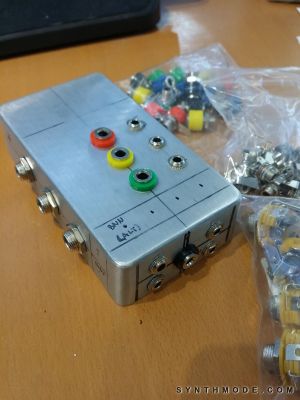
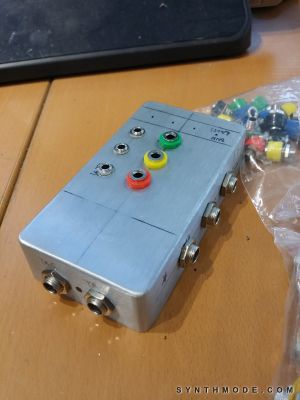


The box is a 1590B Style Aluminum Stomp Box Effects Pedal Enclosure, which was about $4 on ebay and the connectors also from ebay as cheap as I could find them:
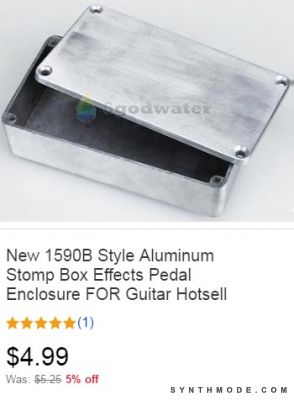
~~~~~~~~~~~~~~~~~~~~~~~~~~~~~

~~~~~~~~~~~~~~~~~~~~~~~~~~~~~
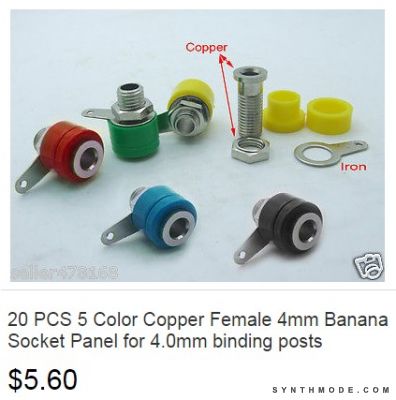
~~~~~~~~~~~~~~~~~~~~~~~~~~~~~
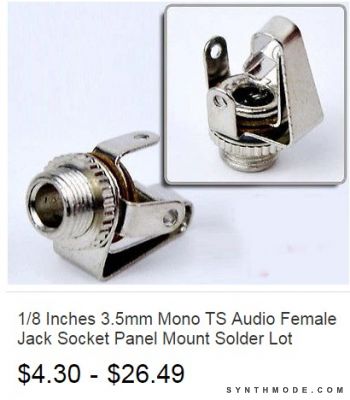
~~~~~~~~~~~~~~~~~~~~~~~~~~~~~
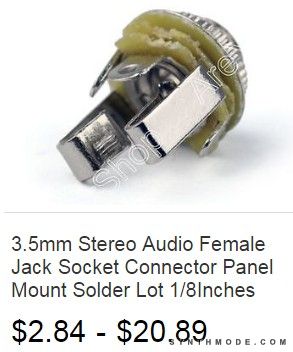
~~~~~~~~~~~~~~~~~~~~~~~~~~~~~
Total for these parts was $20.72, but the actual amount that goes into one box is approximately $10.89 excluding the cost for wire and tools you might need.
Tips when building this box
1. Make sure you use the right drill bits.
2. When drilling through aluminum apply pressure and don't spin too fast.
3. This box is so packed you WILL need to be extremely exact to make everything fit the way I did.
4. Watch out for the cap ridges on the aluminum box--if you place a connector too close to the edge, it may obstruct the lid from closing flush.
5. Pick the thinnest wire possible that is still easy to strip. I used what appeared to be thin speaker wire.
6. Don't try to cut every wire exactly to the length needed--it will take too long. Just pick two standard sizes and strip about 1/8"-1/4" at the tip.
7. Assemble the connectors AFTER you have wired them. You will save yourself some headaches and time.
8. Try out all the jacks (at once if possible) before closing the lid to make sure nothing is shorting inside.
If you decide to make one of these do send a pic!




Add new comment